Take, for example one of the
owners of George Bellairs's fictional antique shop, a man referred
to only as "Mr. Small" but described in grotesquely comic
detail as "an enormous man
with a huge paunch which hung between his knees when he was sitting.
He had solid limbs like the branches of an old tree and a round
florid face. His head was shaped like an orange and topped by a
brown, ill-fitting wig. His thick, sloppy lips, large Roman nose,
small shifty eyes and ill-fitting clothes finished-off an appearance
more like that of a shady broker’s man than an expert in old
furniture and prints...so
flabbily fat that he looked to be trundling his paunch before him
like a railway-porter wheeling baggage about...He was smoking a black
cheroot which he kept removing from his mouth and then replacing with
a repulsive movement of his lips, like a hungry child taking the teat
of a feeding-bottle."
Bellairs describes Mr. Small’s
niece, Mrs. Doakes, who worked in the shop with her uncle and his
brother-in-law, tiny Mr. Grossman, as “a
tall, muscular, good-looking woman” with
“a way of exciting men whilst putting women out of countenance.
Martin might have depicted her thusly, with some essential
tweaks:
The entire crew of this novel
are portrayed so comically I nearly forgot I was reading a murder
mystery, with two violent deaths—one so ghastly I had to wonder if
Edgar Allen Poe had gotten a hand in it somehow. Tiny Mr. Grossman is
the first victim, found curled up, suffocated, in an antique wooden
chest he’d bought from a woman who eventually becomes the second
victim, found with her head crushed by either an assailant or rocks
at the foot of a cliff from which she’d either jumped or been
hurled by a murderer. Tough, I should think, for Don Martin to win
laughs with a drawing of that. Perhaps Gahan Wilson could have been
brought in for the victim illustrations were time travel an option.
It’s a well-crafted mystery
with enough plausible suspects to challenge even the most astute
puzzle-solvers, albeit a distinct gullibility in such exercises can
challenge my opinion. Anyway, this one fooled me right up to the
reveal’s edge. I’m not too proud to blame the thrall holding me
captive by Bellairs’s characters. Like a magician’s distracting
hands, their general comic weirdness consistently diverted my
attention from the story’s Sherlockian signposts. Oh, where to
begin?
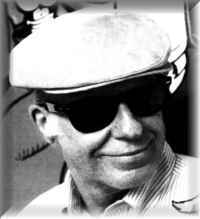 |
| Don Martin |
Miss Selina
Adlestrop, a spinster whose
“small button nose, like a
whiteheart cherry, little heart-shaped lips and a timid, faltering
manner...stood her in very good stead and hid her shrewdness in
striking a bargain,” which
she employed whilst haggling over the chest-cum-coffin with the tiny
Mr. Grossman, whose small
hands and feet and slim figure and “grace
of movement of a ballet dancer”
attempted to charm from her
more quid than she’d have
preferred to put out for the item so dear to her romantic heart.
Then
there’s the local constable, Donald
Puddiphatt, a duffer
“perspiring from every
pore and puffing like a traction engine as he argued with Seth Hale,”
the local undertaker. “They were an ill-assorted couple. One looked
to have been poured into his uniform which fitted him skin-tight
owing to his ever increasing size; the other was nearly as fleshless
as a skeleton with old clothes hanging from his bony body like
washing on a clothes horse.
A great brouhaha breaks out
when the chest is opened in Miss Adlestrop’s rooming house, and
Grossman’s little body is discovered curled up inside. Women
faint. One becomes hysterical and has her face slapped by another,
and Seth Hale, the skinny undertaker, “fell unconscious to the
ground with a great rattle of bones.”
Oh,
and there was the local politician, Councillor
Blanket, who “ looked
made-up for the part of John Bull, like an actor just ready for the
footlights. Grease-painty complexion, tufts of hair, bald head with
puffs of white at the side,” and
Miss Adlestrop’s uncle, Mr. Alfred, a “rabbity”
little eccentric inventor
“with a squint and a
ragged moustache,” who,
"ran so fast from the pandemonium you
couldn’t see his legs going, like a mouse," with
Councillor
Blanket in tow, “lumping
along steadily, his head held firmly erect to keep his hat from
falling off.”
Superintendent
Gillespie, in
charge of the investigation for the local constabulary,
“would go for days without speaking to anyone and then suddenly
change into bouts of great jocularity.He always wore his hat in the
office when his liver was wrong side out. He said there was a draught
from the windows, even when they were closed.” It
quickly became clear the case was too much for Gillespie’s force,
so his boss, Chief Constable Colonel
Carslake, “tall, thin, peppery and self-important,” was forced to
call in help from Scotland Yard, hence the arrive of
Detective-Inspector Littlejohn,
of the Metropolitan C.I.D. A one-man cavalry, who, for some odd
reason is not described in any way, presumably because he’s the
only character in the novel who doesn’t look or act funny, and
Bellairs was relying on reverse imagination to suggest ordinary
sanity and appearance.
The
coroner, Emmanuel Querk,
tall and
thin with
“a peculiar head...only a little broader than his long neck,”
ending
in a point from which “a fringe of downy grey hair spread like a
curtain over his neck and ears.” A
man of multiple quirks, including an aversion to noise, Querk rushed
through his inquest into the murder, adjourning it soon after
a “hurdy-gurdy started in the street outside just as he was
directing the jury and he could hardly wait for their verdict and
beating a hasty retreat to his private room. There he locked the
door, unlocked a cupboard and took out a bottle of whiskey.
It was all that stood between him and the complete madness to which
his wife’s endless debts and incessant nagging were driving him.”
Even
Bellairs tires of the inquest, giving us a break from monotonous
testimony because “we have
heard it all before and it would be sheer
torture to go over it again in the form of Puddiphatt’s official
statement.”
Bellairs
evidently has a thing for tweaking clerical noses. In Intruder
in the Dark,
the first of the Detective-Inspector Littlejohn series I’ve read,
he makes fun of the vicar’s “fruity voice.” In Seven
Whistlers, the
Rev. Mellodew Gryper has “a
voice like an oboe” and is
shown Ichabod Crane-like at a funeral in which “the
mourners had to struggle to keep themselves upright against the stiff
breeze blowing from the sea. The parson’s vestments flapped at
right-angles to his body. The bearers staggered beneath their burden
and tottered from side to side as they advanced to the graveside.
Tall, tortured trees surrounded the churchyard, leaning at an angle
caused by the fury of the prevailing winds.”
In another scene, conducting
sack races for children in a local festival, his oboe voice is grist
for sniggering: “‘Oh, what a shame, Bertha. On, on, you’re
winning. Ohhhhh,’ he oboed, trying to urge them all on without fear
or favour. He sounded at times as though somebody were murdering him,
and his contortions suggested that someone might have dropped a
wasps’ nest down his pants.”
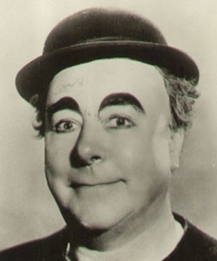 |
| George Robey |
One last ridiculous character
of the many who tortured my funnybone as I vaguely wondered which one
of them might not have been the villain who locked poor itsy bitsy
dancing Grossman in the chest and left him to suffocate, essentially
buried alive. I give you the insignificant-seeming Mr. Troyte, in a
walk-on, walk-off role (perhaps exiting in handcuffs, making wuffing
noises as he goes?): “a
small, portly man who looked like a pug dog with George Robey
eyebrows...
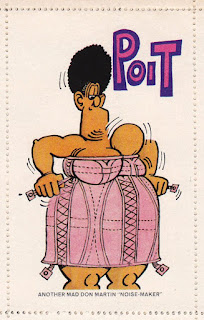
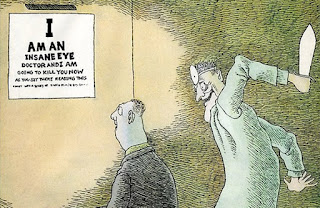
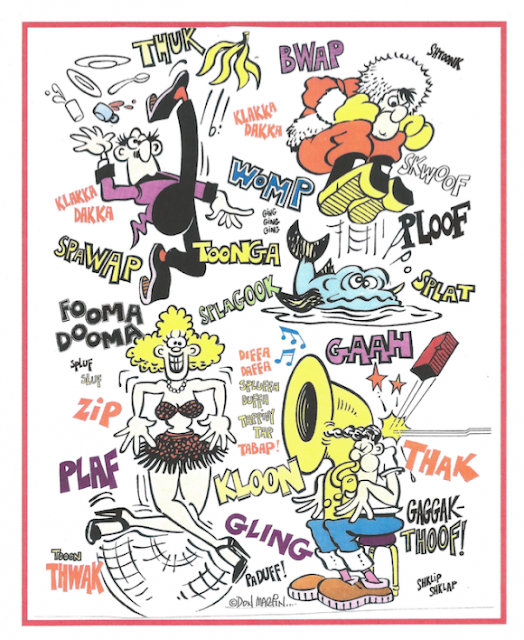
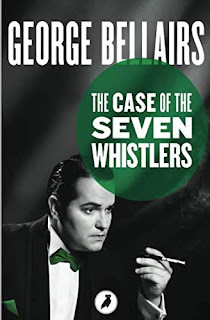
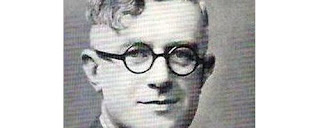

Yeah, I enjoyed this book as well. I don't think I've ever laughed so hard upon the discovery of a dead body as I did at poor Mr. Grossman's ghastly tea party appearance. SO funny. So right on the money. In truth the book is worth reading just for this scene alone. Great review, Matthew.
ReplyDeleteThanks, Yvette, and thanks for introducing me to Bellairs!
DeleteWell, Matt, unfortunately I chose to not host the joke about the spammer you posted to the FFB post, since it could be taken by the literal-minded or those choosing to insist as a genuine threat, which a prick such as our spammer could use as an excuse to get Blogger to kill the blog, as opposed to the nothing which will get Blogger to address that our spammer or spammers are using their blogless Blogger accounts to facilitate spamming.
ReplyDeleteGood point, Todd. Hadn't thought of that. It's why the security curating feature is a necessary distraction. But I'll say this on my blog, spammers should be soundly flogged and introduced to the fire-ant community in Florida.
DeleteI did a little bit of looking for online copies of George Bellairs' books, and it looks like I will have to settle for some ebook editions, except of course for the few that have come out in the British Library reprints. Oh well.
ReplyDeleteI've stopped buying paperbacks except for the occasional gift, Tracy. I'm hooked on the instant dictionary and the copy/paste feature for review purposes.
DeleteI am with you there, Mathew. If I could afford it I would have books in both versions, because the cut and paste is great. Maybe when I retire (in about a year) I can read more e-books because I can read them in the day and not impact my sleep.
Delete